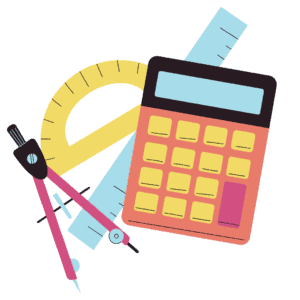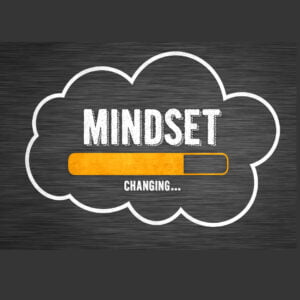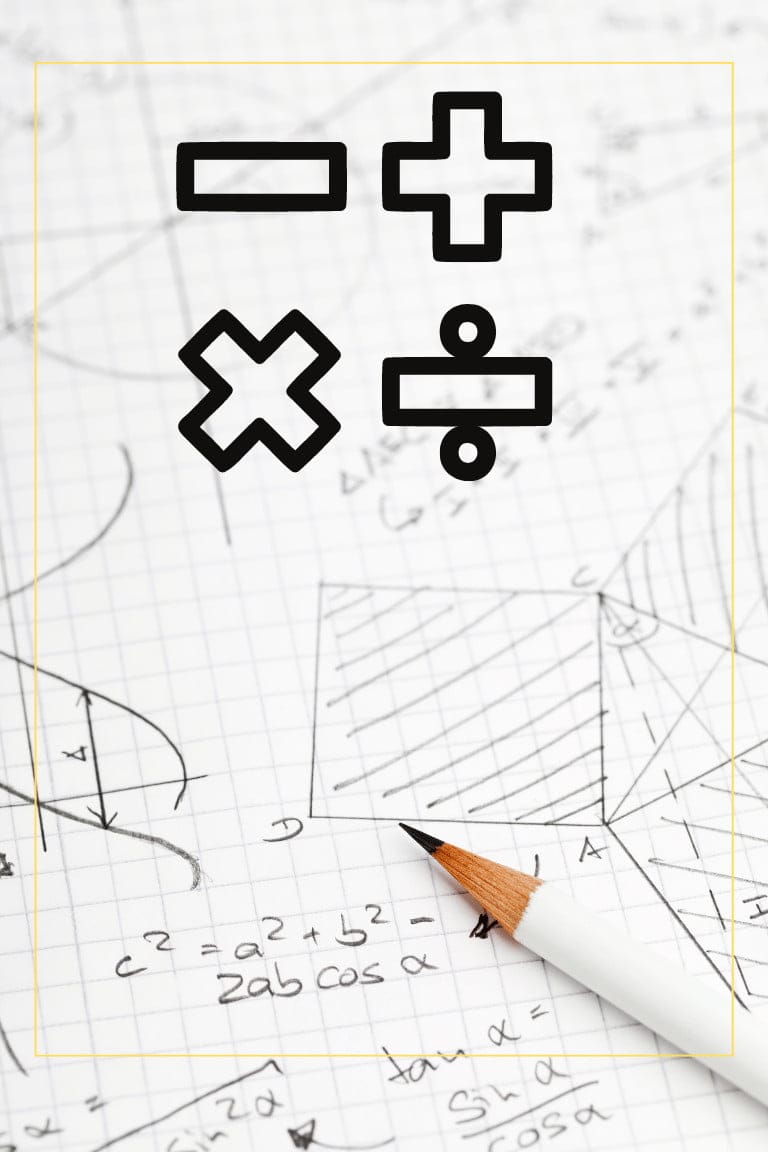Ways To Remediate A Mathematics Disorder
Whether you are a teacher or a parent, the best way to help a student with a math disorder is to first make sure you understand everything about it.
A mathematics disorder is one of several specific learning disabilities that is also often referred to as dyscalculia. Dyscalculia is pronounced duhs · kal · kyoo · lee · uh.
Nevertheless, a math disorder makes learning math hard to process and understand causing difficulty with counting and doing basic math such as adding, subtracting, multiplication, and division.
Like all specific learning disabilities, however, having a mathematics disorder does not impact one’s intelligence. In addition, it often co-occurs with other learning disabilities like dyslexia.
To better understand the relationship between a math disorder and specific learning disabilities, feel free to check this video out.
There Are Two Types of Mathematics Disorders
There are two main areas impacted by a math disorder:
- A math disorder in calculation or mathematical computation is when a person has difficulty performing basic math problems such as addition, subtraction, multiplication, and division.
- A math disorder in reasoning or mathematical reasoning is when a person has difficulty strategizing to solve a problem. For example, how to break down a word problem.
A person can have one or both of these math disorders. Although mathematics disorders are not as common as other learning disabilities, they are still important enough to remediate as soon as possible.
Math is an essential part of students’ K-12 and beyond their academic journey. Ensuring they have a solid foundation will better prepare them to tackle subjects like algebra, trigonometry, geometry, and other higher-level maths.
10 Ways You Can Help Kids With A Mathematics Disorder
1. Treatment For A Mathematics Disorder: Provide Multisensory Instruction
One of the best ways to instruct those with any learning disability, including a math disorder, is through multisensory instruction.
Some people may associate multisensory instruction with reading. However, subjects like math can benefit too.
Multisensory instruction is a way of teaching that engages multiple senses simultaneously.
One of the best, most innovative programs that I’ve come across to help students with basic multiplication facts is Times Tales.
It’s a story-based program that helps children memorize the times tables.
It’s visual and it’s auditory! The students simply watch the stories and they eventually start to memorize the tables. It’s almost effortless!
What makes Times Tales even better is that it’s cost-effective. As an adult, I really enjoyed watching the stories with my daughter and inadvertently brushed up on my facts too.
I actually reviewed Times Tales. Take a look below.
Using manipulatives to aid in multisensory instruction is great too. Many teachers use base 10 blocks to help students gain number sense.
I’ve started using a math curriculum called Math U See. It goes from K-12 and has proven to be one of several best intervention strategies for Dyscalculia.
It’s perfect for homeschoolers and smaller private schools. Of course, it can benefit all students in all schools, but using an unapproved curriculum in public schools can be an issue.
I did a review of the premier level of Math U See. Feel free to take a look at it below. You will get a good feel for the program and how it works.
If you are interested in the curriculum you can learn more at their website; however, I’ve found many of the levels on Amazon too. So compare the pricing before purchasing.
3. Treatment For A Mathematics Disorder: Resist Using Worksheets
Remember, math concepts are abstract and numbers on a paper are mere marks on a worksheet.
Why risk causing more confusion or frustration if you don’t have to?
I like the strategy that Brain Balance suggested, talk or write out the problem.
Talking out a problem can help with seeing relationships, seeing solutions, and/or organizing.
Therefore, if you can stay away from worksheets do so until the child has a good understanding of what you are trying to teach.
4. Treatment for A Mathematics Disorder: Play Games And Activities
We have to change our mindset about how teaching and learning look. One of the best methods for kids to learn is through play.
According to research, teaching students using games can help increase students’ participation, improve social skills and emotional learning, and motivate students to take risks.
Kahoot, a popular, online, multiple-choice quiz game, found that playing the game improved students’ attitudes toward learning and boosted their academic scores.
Activities and games allow students to focus on different mathematical concepts and it provides reinforcement of concepts taught.
For example, playing games that incorporate dice teaches kids to recognize the number patterns on the dice rather than having to rely on counting the spots one by one.
This is a really important skill that will help students improve their math fluency.
The benefits of play are great and the implication goes beyond math. It can improve children’s abilities to plan, organize, get along with others, and regulate emotions.
5. Treatment for A Mathematics Disorder: Assistive Technology

We can level the playing field a little bit more for kids who have mathematics disorders by encouraging the use of assistive technology.
It can be a little tricky with math in the early grades. The reason is that we eventually want students to be able to recall basic facts. And not just use a calculator.
For this reason, especially in the early grades, students are not generally permitted to use calculators while practicing classwork.
However, I feel it has to be a very careful balance for kids who have math disorders.
It’s important to know and understand exactly where your child is having problems with math. This will help assess what assistive technology might be best.
Also, it will assess when and how to use this technology, particularly the use of a calculator.
If your student is having problems with basic calculations and math operations I would consider using a calculator. By the way, I like talking calculators.
A calculator can serve as a tool for self-correction. It can also help students to understand how they arrived at the answer.
However, understand the goal is to get them to be able to do basic math without the calculator as much as possible.
Therefore, continually assess if the use of the calculator is hurting in that regard.
Other low-tech assistive devices that you may or may not be aware of includes an abacus, number lines, graph paper, talking clocks, and magnetic fractions and bars.
6. Treatment for A Mathematics Disorder: Teach A Growth Mindset
It should come as no surprise that for some learners with math learning disorders school can be discouraging.
It can make some feel alone and inferior. To combat this, having the proper perspective always helps.
No one likes to fail. But failure is a part of life.
If you are someone with a math disorder, you are sure to experience failure at some point and maybe even often. That is why our perspectives have to be different.
Teaching and developing a growth mindset is one of several key intervention strategies for Dyscalculia or if you prefer mathematics disorder.
A growth mindset teaches what I call how to fail well. In short, it teaches us to learn from failure and embrace it. As s a result of learning from that failure improvement often follows.

It’s extremely important to understand how continued failure generally impacts students.
Students who continue to experience unexplained failure gradually disengage.
Teachers and parents must always be on the defense to protect a student’s self-esteem.
It’s imperative that students’ efforts in tackling math outweigh output or grades.
In this way, it helps to reinforce that a person’s self-esteem is centered on the belief that one’s ability can be developed over time with dedication and persistence.
More importantly, it helps them to weather the stormy sea of “not getting it.”
I never like to sound so final, but we never prepare people with learning disabilities in general and math disorders specifically for the reality that they may never “get it” to the degree to which they may need it or want it.
That is not to say they will not be successful. It just means that they have to be able to embrace failure and never give up.
A perfect example would be someone with a reading disorder. Maybe they can’t decode their master’s level textbook, but they still can access the same information by listening to it read to them.
It’s not that simple in math, I know. However, I can’t tell you the number of people I’ve encountered who quit higher education because they couldn’t “get it.”
They couldn’t “get it” enough to pass the class.
But on the other hand, I’ve heard the stories of people who said, “I knew I couldn’t do that math. But I stayed in the professor’s face asking for help.
I never did get that math to the level I should have. However, I was happy to get that “D” I know my professor help me out.”
The difference…one gave up while the other never stopped and a way was made out of no way.
I am a firm believer that we have to prepare our students for every outcome.
7. Treatment For A Mathematics Disorder: Allow Students To Work Within Their Strengths
This is such an underrated intervention strategy for math disorders; however, it’s a much-needed one.
We always seem to highlight or focus on academic weaknesses. We hardly ever put that same focus into celebrating academic strengths.
Allowing students to work within their strengths builds confidence. It helps them to not magnify their weaknesses.
Think- is the student good a building, acting, writing, or drawing? Incorporate those things in their math.
Allowing your student to show their knowledge of any given topic or concept by selecting how they can represent it best will keep them motivated.
For example, they can build a model or act out a part. They can write about it or produce a drawing.
The overall purpose is to allow students to select how they demonstrate their understanding of a certain topic creatively.
Allowing students to showcase their knowledge from a place of strength will help students to develop grit to tackle the things they can’t do as well.
8. Treatment For Mathematics Disorders: Teach The Language of Math
We lose opportunities to successfully teach math to students in general when we don’t equally focus on the language of math.
It should be our goal to broaden our students’ mathematical vocabulary and encourage them to articulate their thinking using math vocabulary at each stage of the math tasks.
Start by ensuring students know synonyms for basic arithmetic operations.
For example, synonyms for subtract might include minus, take away, less than, fewer than, decreased, take from, reduce, difference, etc.
Start new math lessons by Introducing new vocabulary words. Do this through explanations, examples, and illustrations.
For terms that students don’t already know, devote some time to thinking about and discussing their meanings.
One cool idea is to have students create their own glossary of unit-related words.
9. Make Math Visual- Intervention Strategies For Dyscalculia

Although the goal is to help those with learning disabilities to be able to make sense of math…gain good number sense, the fact is numbers don’t make sense to those with dyscalculia.
Instead of being concrete, numbers are abstract to these learners.
Numbers to those with a mathematics disorder can be as abstract as your favorite painting with random marks and lines here and there.
Unless you are one of the ones who can appreciate the beauty in those marks and lines, you don’t “get it.”
So a good way to help make math more concrete and less abstract for these learners is to teach by writing step-by-step sentences for older students who can read.
Younger kids with a mathematics disorder, spend plenty of time manipulating concrete items before working on math problems on paper.
Using this strategy will help the learner to make connections and increase their chances of “getting it.”
Personally, with my middle school students, I often demonstrate problems by writing the steps out followed by the numbers.
It helps with actually seeing the relationship between the mathematical steps.
This will require a little more work on the part of the teacher; however, I feel that every student is worth that extra effort.
The benefits to those who already struggle with math disorders are just too great not to do it.
This will help them gain a conceptual understanding of mathematics and it will aid in information going from their short-term memory to their long-term memory.
In addition, another thing you can do is use pictures to illustrate the problem.
Using pictures, charts and graphs help to increase the chance of the students seeing the relationship and ultimately aiding in the understanding of the concept.
10. Treatment for Mathematics Disorders: Use Accommodations
Another way to help kids with a math learning disorder is to allow them to use their accommodations.
Whether it’s extended time or the use of a calculator, accommodations play an important role in leveling the playing friend.
Accommodations are important for students with a mathematics disorder. They remove barriers to learning.
If you implement these ten things with your student, you can expect to see improvement in their math skills. Remember, a mathematics disorder doesn’t have to negatively impact a kid’s life.

0 Comments